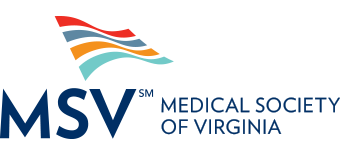Marking a significant advance in infant safety, the U.S. Food and Drug Administration (FDA) has given De Novo approval to Happiest Baby’s SNOO Smart Sleeper. This is the first time the FDA has given De Novo approval to a product designed to keep sleeping babies safely positioned on the back. Babies who are positioned to sleep on the back are at a lower risk of SIDS.
Every year, 3,500 American babies die in their sleep from suffocation and unexplained causes including SIDS (Sudden Infant Death Syndrome). These deaths are collectively referred to as SUID (Sudden Unexpected Infant Death) and constitute the leading cause of death of healthy, full-term infants during the first year of life (90% of SUID cases occur in the first six months).
Tragically, the number of these deaths has continued unchanged at 3500 every year for over 20 years.
In the 1990s, doctors discovered that sleeping on the back dramatically reduced the incidence of SUID. Today, it is one of the key safe sleep recommendations of the American Academy of Pediatrics. The National Institutes of Health encourages back sleeping as “the single most effective action that parents and caregivers can take to lower a baby’s risk of SIDS.” And, the CDC advises that “babies who sleep on their backs are much less likely to die of SIDS than babies who sleep on their sides or stomachs.”
Despite this universal recommendation, almost two-thirds of SUID deaths still occur when babies roll to, or are placed on, the side or stomach. SNOO is the first and only bed that facilitates back (supine) sleeping. The SNOO Sack safely swaddles babies and attaches to the bed, keeping them securely on the back throughout sleep.
SNOO is for use by babies under 6 months of age or until they have demonstrated they can consistently roll from stomach to back during sleep. In a study of 1,012 infants, SNOO was found to reduce unsafe stomach sleeping by 91.5%. However, SNOO has not directly demonstrated a reduction in the incidence of SIDS/SUID.
“As a pediatrician for over 40 years, I’ve witnessed far too many times the unbearable pain of parents who placed their baby in bed at night, only to find them lifeless in the morning,” said Dr. Harvey Karp, co-founder and CEO of Happiest Baby, Inc. “Stomach sleeping leads to the tragic death of thousands of healthy infants every year. Yet, we routinely put babies in bed totally unsecured for 12 to 14 hours every day. Just as infant seats dramatically improve car safety, we hope to dramatically improve sleep safety by keeping babies on the back and reducing risky rolling.”
On March 30, 2023, the FDA granted the De Novo application of Happiest Baby’s SNOO Smart Sleeper:
“The Center for Devices and Radiological Health (CDRH) of the Food and Drug Administration (FDA) has completed its review of your De Novo request for classification of the SNOO Smart Sleeper, an over-the-counter device under 21 CFR Part 801 Subpart C with the following indications for use:
“The SNOO Smart Sleeper bassinet plus the SNOO Sleep Sack are jointly intended to facilitate a supine position during sleep. Infants who are placed in a supine sleep position are at lower risk of SIDS/SUID. The device is intended for home use by caregivers of infants from birth to 6 months of age, who are not yet able to roll over consistently.
“FDA concludes that this device should be classified into Class II. This order, therefore, classifies the SNOO Smart Sleeper, and substantially equivalent devices of this generic type, into Class II under the generic name infant supine sleep system.
“FDA identifies this generic type of device as:
“Infant supine sleep system. An infant supine sleep system is a device intended to facilitate a supine position during sleep for use in infants that are not yet able to roll over consistently. Infants placed in a supine sleep position are at lower risk of sudden infant death syndrome (SIDS) or sudden unexpected infant death (SUID).”
Click here for more information regarding the De Novo approval.
ABOUT SNOO
SNOO was created by renowned pediatrician and child development expert, Dr. Harvey Karp. Launched in 2016, SNOO helps lull babies to sleep faster and keep them sleeping longer. In recognition of these landmark advances, SNOO has received over 30 top honors, including the National Sleep Foundation’s Innovation of the Year and Fast Company’s World Changing Idea. SNOO has been featured at the London Design Museum, Victoria and Albert Museum, SF MOMA, and is in the permanent collection of the Smithsonian Institution.
In an advance in pediatric sleep science, SNOO uses specially designed, continuous rhythmic sensations that mimic the motion, sound, and tactile embrace babies experience in the womb. Although the current practice is to place babies to sleep in a dark, still, silent room, babies actually sleep better with constant motion, sound, and snug holding (e.g., rocking in a lounger, long walks in a carrier or stroller, car rides, etc.). This was shown in a large infant sleep study (7,157 babies, 0-6 months of age). It demonstrated that SNOO’s constant rhythms were associated with an unprecedented one hour per night average increase in sleep. Furthermore, by two months, SNOO increased the longest continuous period of night sleep from an average of five hours to almost seven hours; a 40% boost in the sleep most precious to new parents—and most helpful for infant well-being—consolidated, continuous sleep.
Hundreds of thousands of families have used SNOO as their baby’s first bed. Most parents obtain it directly through Happiest Baby’s rental program and thousands get a free, six month SNOO rental from their employer. Over 60 top American companies, including, JP Morgan, Activision-Blizzard, Snapchat, Children’s Hospital of New Orleans, and Under Armour, offer SNOOs to support new parents.
ABOUT HAPPIEST BABY
Happiest Baby is an LA-based company co-founded by Dr. Harvey Karp and Nina Montée Karp. It’s a
mission-driven company dedicated to protecting the health and wellness of children, parents, and healthcare workers across America and around the world. The company develops innovative, science-based products and content to solve every-day childcare challenges and to enhance the well-being of families and healthcare providers.
Dr. Karp is the author of the celebrated parent books and streaming videos, The Happiest Baby on the Block and The Happiest Toddler on the Block and the book, The Happiest Baby Guide to Great Sleep: Birth to 5,which have been used by millions of families and translated into dozens of languages.
In addition to SNOO, the company makes numerous other parent-support products, including Sleepea (an award-winning, “5-second” swaddle), SNOObear (a white noise, plush toy that aids infant/toddler soothing and sleep), and SNOObie (a white noise and nightlight device to improve a child’s sleep and teach mindful breathing, used from birth to school age).
For Inquiries: [email protected]
SOURCE Happiest Baby, Inc.


